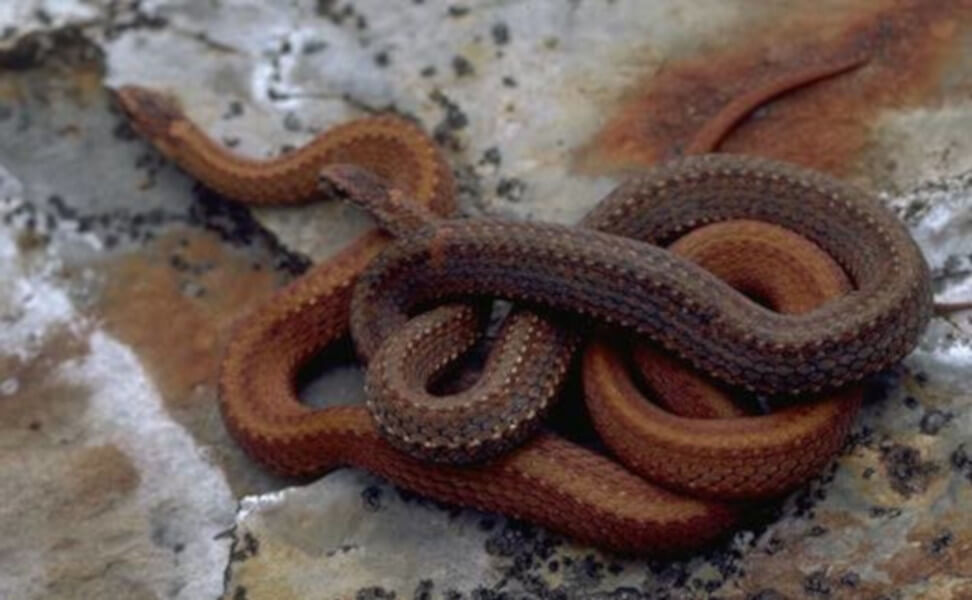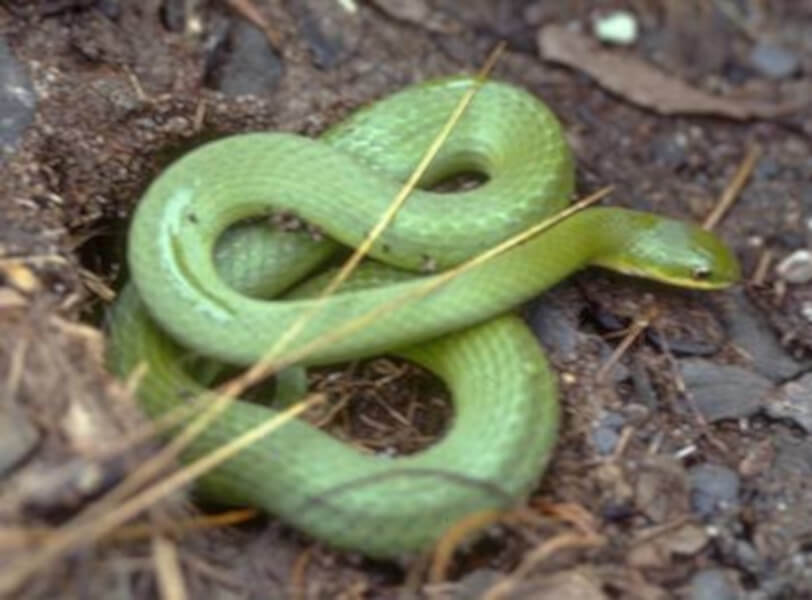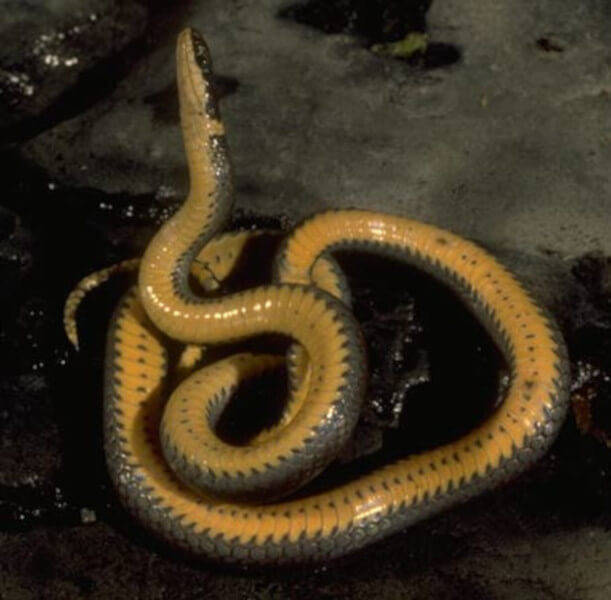Now that winter has eased its grip, the cold-blooded creatures are starting to make an appearance in the Bras d’Or Lake Biosphere.
The Mi’kmaw word for May is Squoljuiku’s which translates to “frog croaking time.” Frogs and toads are indeed active and obvious at this time of year. Less vocal, but just as enthusiastic, are the snakes (Mi’kmaq: mte’skm) which are coming out of hibernation and beginning the process of producing the next generation. I lived in Australia for many years and learned to have a deep respect for our slithery friends.
However, the four species that call our Biosphere home do not possess the means to cause you any significant harm. In fact, they are our valuable co-inhabitants in the Biosphere.

Pictured is the Northern Redbelly Snake.
Take the Northern Redbellied snake for example, the smallest of the Biosphere species (30 centimetres long). Because their preferred diet is rich in slugs, you would be wise to encourage their occupation of your garden. The Northern Redbellied snake can be found from Texas to Nova Scotia. There is an abundance of their preferred habitat in the Biosphere. This species is most abundant in moist, cool areas of hardwood and mixed woodland and is most active at night. They are usually brown to reddish brown and may have four faint stripes on their back. Aptly named, their bellies are usually a striking bright red, although it may be a bit more orange or pinkish. The head is usually brown or reddish brown on top with a white throat and chin. There are three light spots around the neck which may mix together to form a collar. They emerge from hibernation in April and will give birth to about seven or eight live young between late July and early September. Around October or November, they will find a place to hibernate under a log or in a crack in the rocks.

The other smallish snake in the Biosphere is commonly called a grass snake. The back and upper sides of the Eastern Smooth Green snake (or grass snake) varies from grass-green to yellowish-green. The adults are about 45 cm long, their preferred diet includes a healthy number of moth larvae and spiders and they like to live in old fields, lawns and gardens. They will be emerging from hibernation at this time of the year. Unlike the Northern Redbellied snake, grass snakes do not bear live young. In July or August, females lay from three to eight eggs in damp places such as the underside of rocks, in open areas exposed to the sun’s warmth. The grass snake is native to the Nearctic region through southeastern Canada to Saskatchewan, and south to Illinois and Virginia.

If you encounter a snake that has a distinct ring around its neck, you have probably met our third species, the Northern Ringneck (adults 54 cm long). This snake has shiny bluish-black sides and a ring of yellow-orange or red-orange which continues down to the belly. Preferred habitat for this species is under fallen logs near streams and it likes to dine on salamanders, although it has been known to include Redbellied and grass snakes in its diet. Females lay several eggs in damp places such as under rocks in open areas exposed to the sun. Sometimes many females lay eggs together in a group nest. Northern Ringneck snakes are often found near the foundations of buildings and occasionally in basements. Although this species does occur in the Biosphere, it is quite uncommon.
The largest and best known of our Biosphere snakes is the Maritime Garter snake (up to 91 cm long). There are many types (subspecies) of garter snakes, all in the genus Thamnophis, ranging from the subarctic areas of Canada to Central America. The subspecies called the Maritime Garter snake is found throughout Quebec, Nova Scotia, New Brunswick and Prince Edward Island. The patterning on its skin is reminiscent of the garters that men once wore to hold up their socks. My most recent encounter with a garter snake was in the middle of a lake near Guysborough. I was in a canoe and the snake was peacefully swimming from one shore to the other, effortlessly undulating and progressing faster than I could paddle. Garter snakes are excellent swimmers and like to live near the lakeshore, in the forest and on farmlands. They have an eclectic diet composed of fish, frogs, salamanders, worms and the occasional mouse that they are lucky enough to catch. They are live bearers, producing up to 40 babies in late summer. They will bite if you pick them up but it will amount to a sensation similar to that of a horsefly bite. More disconcerting is the smelly fluid that they will exude as an incentive for you to release them. However, you can take their picture without consequence and upload it to I-Naturalist at: https://www.inaturalist.ca/, a web-based platform which is very easy to use.

Dr. Annamarie Hatcher is a consulting ecologist and a board member of the Bras d’Or Lake Biosphere Reserve Association (BLBRA). For more information about the Bras d’Or Lake Biosphere Reserve Association, please visit: http://blbra.ca/or their Facebook page: (https://www.facebook.com/blbra/).


